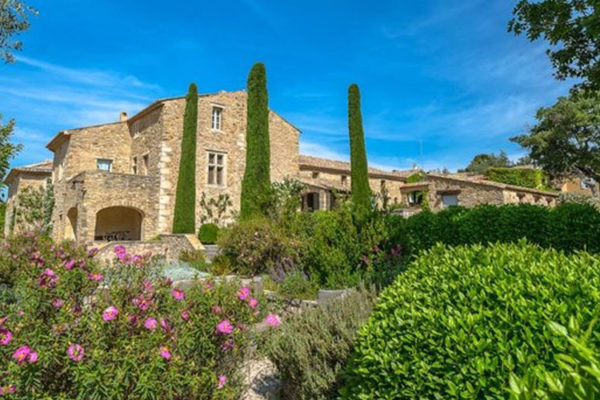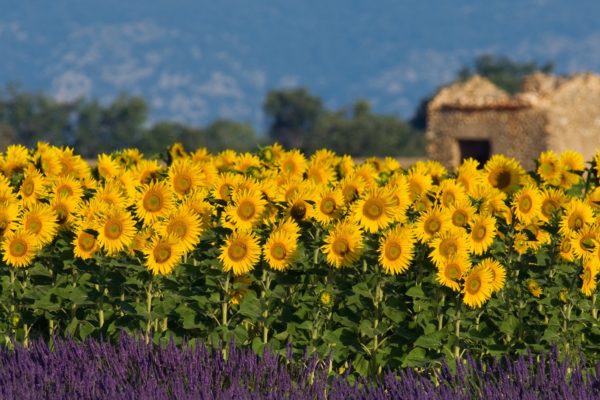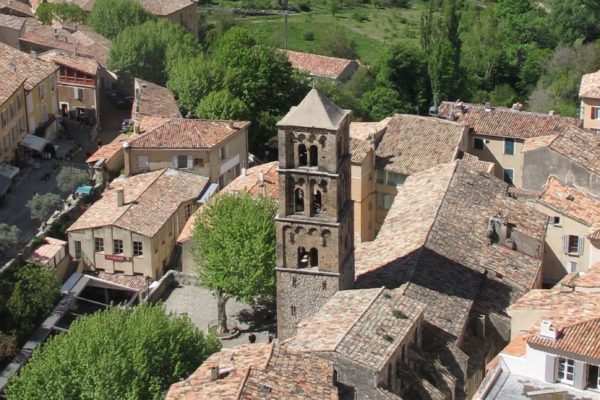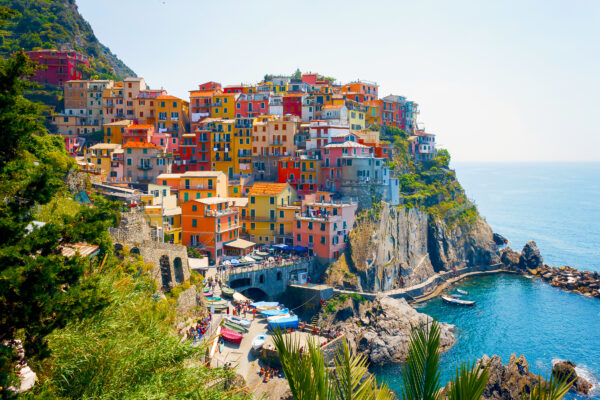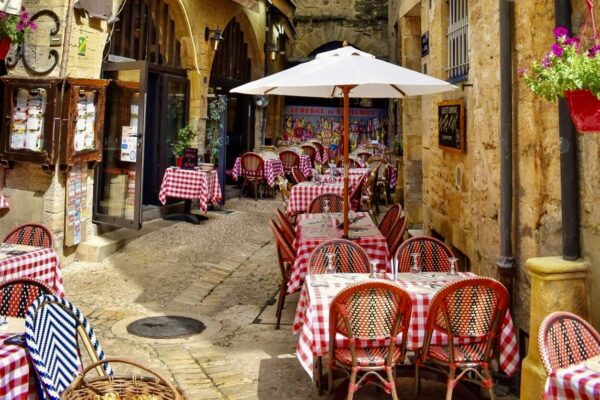A Quick Rosé Refresher
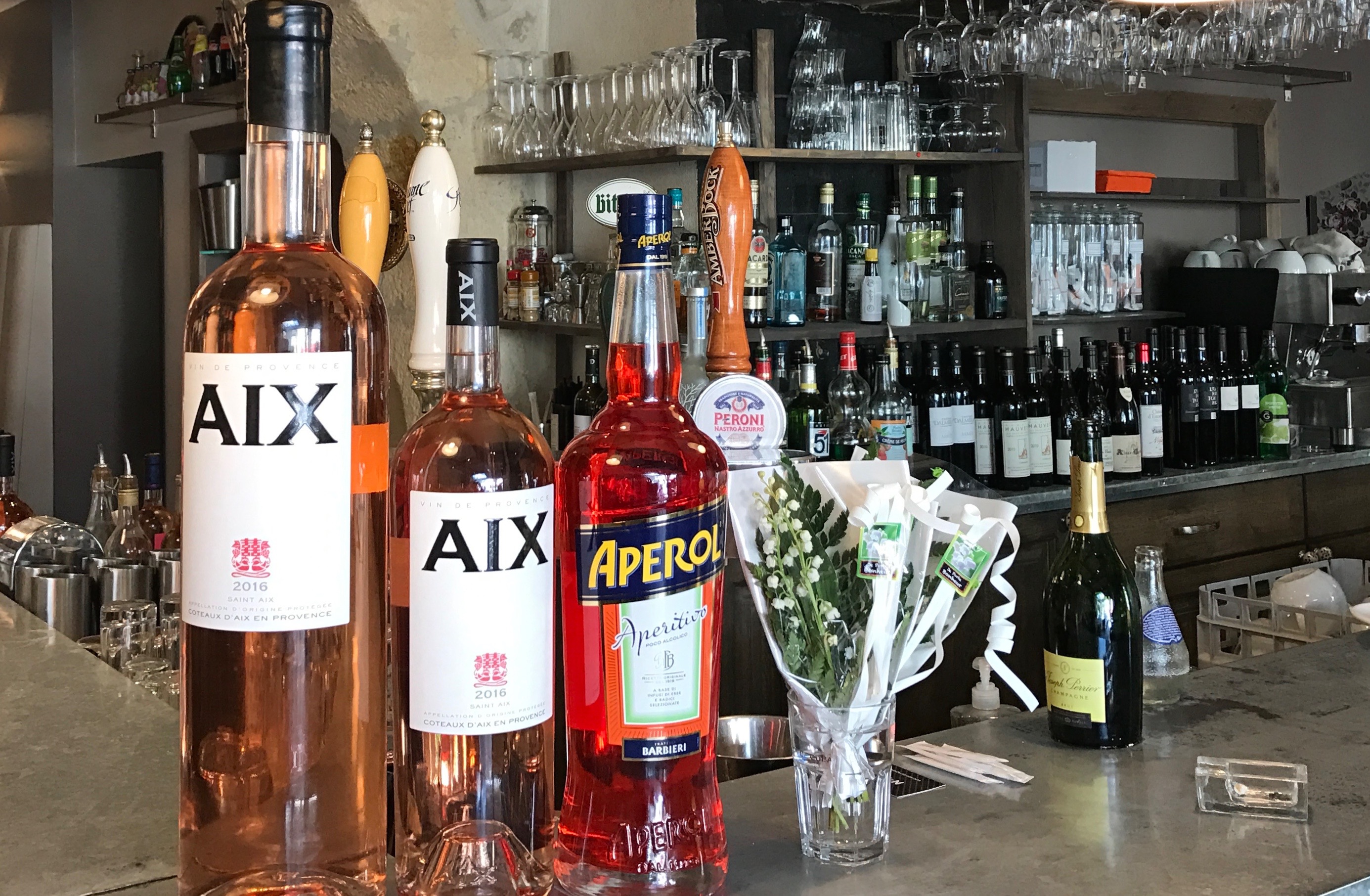
Bar scene in Saint-Rémy-de-Provence. Photo by Marla Norman.
by Michel Thibault, Co-Owner of Michel Thibault Wines.
Unless you have been hiding under a rock for the past three years, you are aware of the explosion of Rosé wines on the market. Grocery store aisles that used to feature 3-4 Rosés are now offering 12-15 selections or more. Most of the Rosés currently being offered come from Provence.
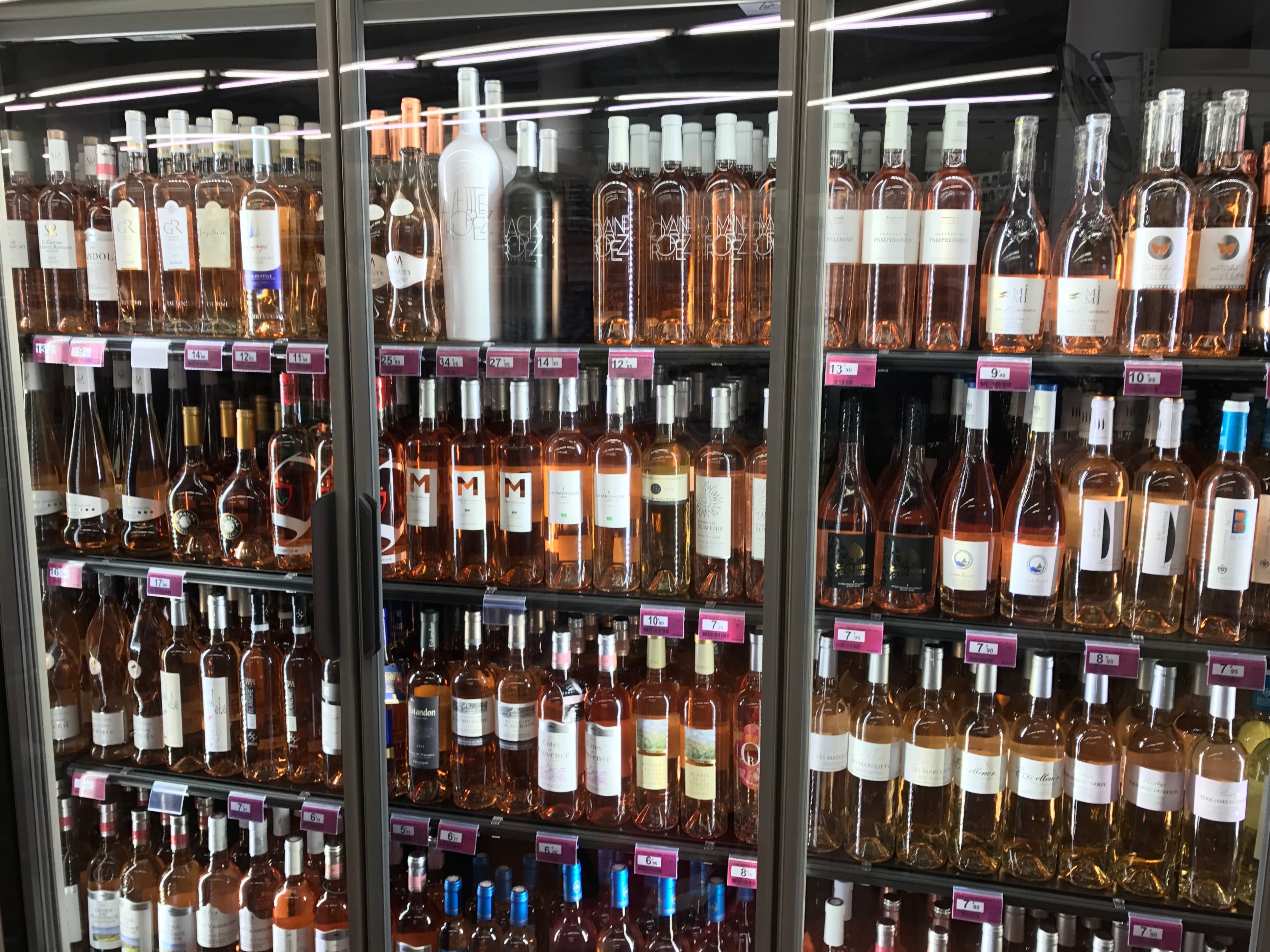
Rosé selections seem to grow by the day! Photo by Marla Norman.
Sure, there are nice Rosés produced here in the U.S., as well as in Spain and in other regions of France. Bordeaux for example, boasts a nice selection. However, folks prefer the Provençal Rosé for two main reasons:
1) The Provençal Rosés are light and refreshing but still have nice grip and good body. Often the Rosé from Bordeaux is too lazy and bland, while the Rosé from Loire is too soft. The best Rosés have a little bite that provides acidity and length — the perfect compliment for food.
2) The prices are sooo good — most of the time under $20 Too good to pass up!
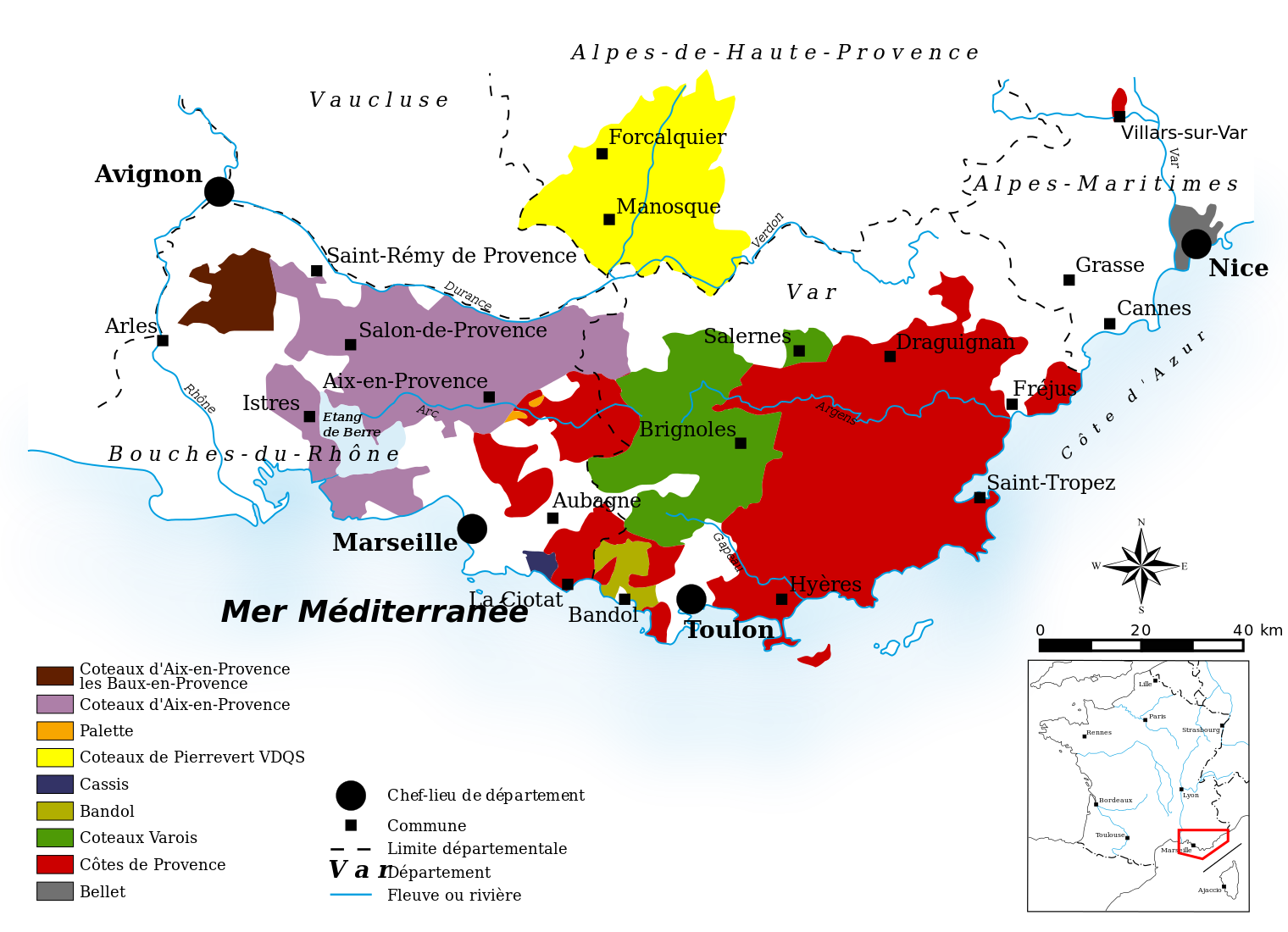
PROVENÇAL APPELLATIONS
There are essentially eight appellations in Provence, with small producing areas such as Bellet, where the Vermentino made famous by Miraval is produced. Another tiny appellation is Palette, a beautiful wine-growing area just outside of Aix-en-Provence, with outstanding Reds as well. Finally, there is Pierrevert, near Manosque, an area also renown for its millions of acres of lavender.
Some of the more important appellations, though are Bandol and Cassis on the coast where the use of Mourvèdre adds to the complexity and intensity of the wines. Coteaux Varois, protected by the Sainte-Baume Mountains, is another important region known to harvest its grapes much later in the year, thereby producing a full-bodied Rosé.
The largest appellations for Rosé though are Coteaux d’Aix-en-Provence and, primarily, Côtes de Provence. Côtes de Provence is actually responsible for 60% of the total production of Provence wine and over 50% of the total production of Rosé! The appellation spreads out from Draguignan, up north, to Saint-Tropez and Frejus on the Riviera coastline, to Toulon, which is also the Mediterranean base for the French fleet. Côtes de Provence is the Easternmost appellation for Provençal Rosé, and it includes wines of very different character. Most Rosés in the Côtes de Provence are made of combinations of Grenache, Cinsault, Carignan, Mourvèdre, Tibouren or Rolle. Sometimes a little Cabernet Sauvignon or Syrah is added for more body and structure.
Modern winemakers use some oak for complexity and the Saignée Method is used in at least 20% of the production in the area. Saignée is the process by which some of the juice is removed (“bleeding off”) to add concentration, color and flavor to the wine.

Palette — a beautiful wine-growing area just outside of Aix-en-Provence. Photo by Marla Norman.
REGIONAL STYLES
The coastline Rosés from the Saint-Tropez area (Believe it or not, there is more to Saint-Tropez than huge yachts, movie stars and $25 cups of coffee…) are generally light and soft with mild citrus aromas of pale fruit like watermelon and cherries. These wines are somewhat mineral, although not as much as the wines further along the coast in Bandol or Cassis. Saint-Tropez Rosés are mostly gentle and easy drinking. The most famous of these is Château Minuty.
Uplands near Draguignan, the estates producing wines are full of history: Château d’Astros and Château Roubine were both built by the Templars. Château de Selle, another quality producer, was the primary residence of the Counts of Provence while Château Sainte-Roseline was an 11th century abbey.
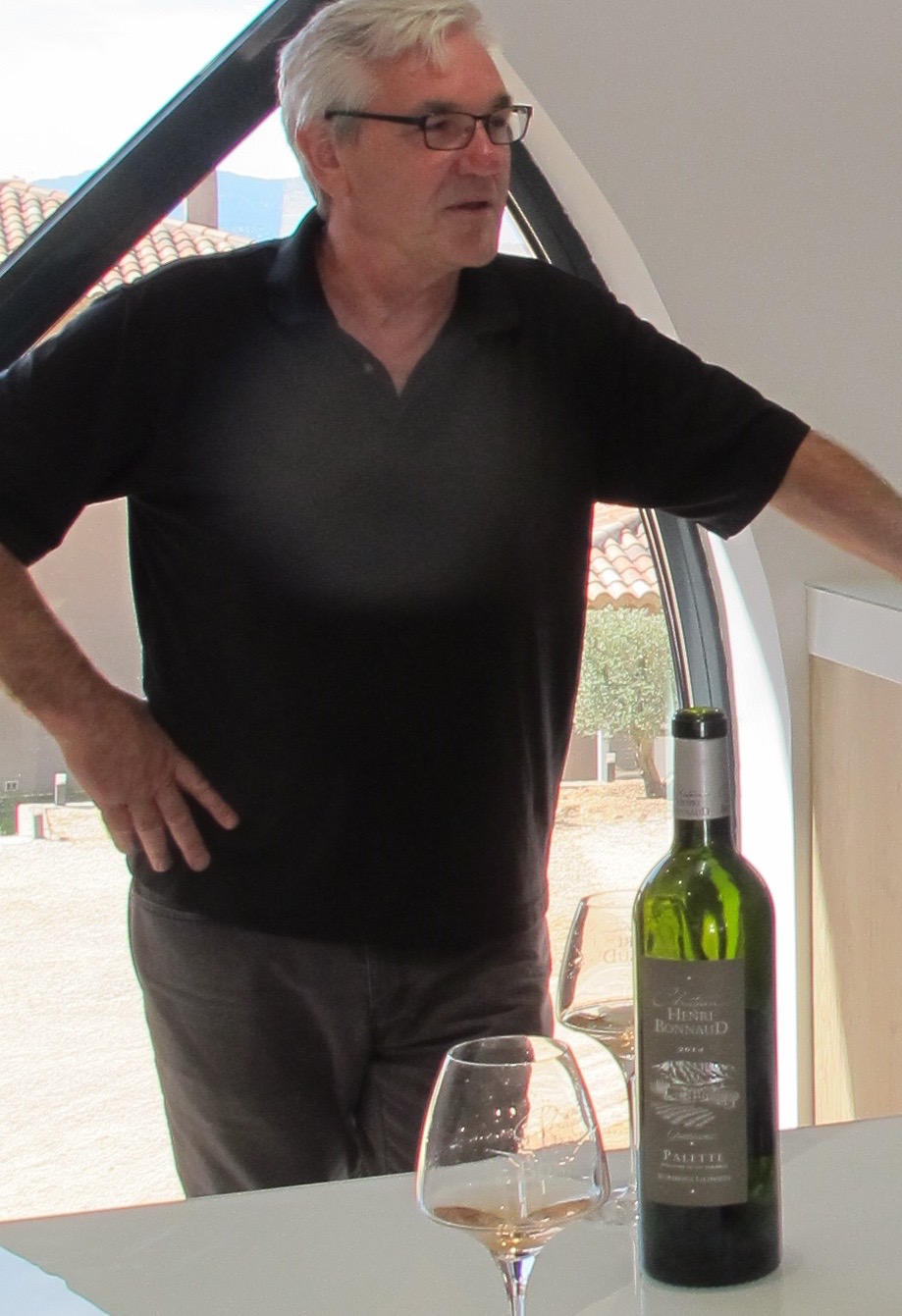
Michel Thibault
The two finest properties in my mind are Château Roubine and Château Sainte-Roseline. Roubine, owned by superstar Valerie Rouselle, makes a pleasant Rosé, with a catchy name: La Vie en Rosé. However, Roubine’s best wines, in my opinion, are the spicy, rich and bold reds. These wines are expensive for the region, but so delicious with hearty fares.
The very finest Rosé for me is Château Sainte-Roseline. This is a wine that combines freshness and elegance with medium body. It combines beautiful aromas of white cherries, ripe citrus and wild herbs. This is also a Rosé that will also hold up to the heat of the day. Truly is Provence in the bottle!
Driving from Aix-en-Provence to Nice via the main road will give you a good idea of the identity of this enchanting Provence area, with its slanted hillsides and vineyards without end. Stop on the roadside to the village of Le Luc or visit the amazing Le Tholonet Abbey, but whatever you do, do it with a glass of Côtes de Provence Rosé!!
For more information and purchases for any of the wines mentioned in this article, visit Michel Thibault Wine.




